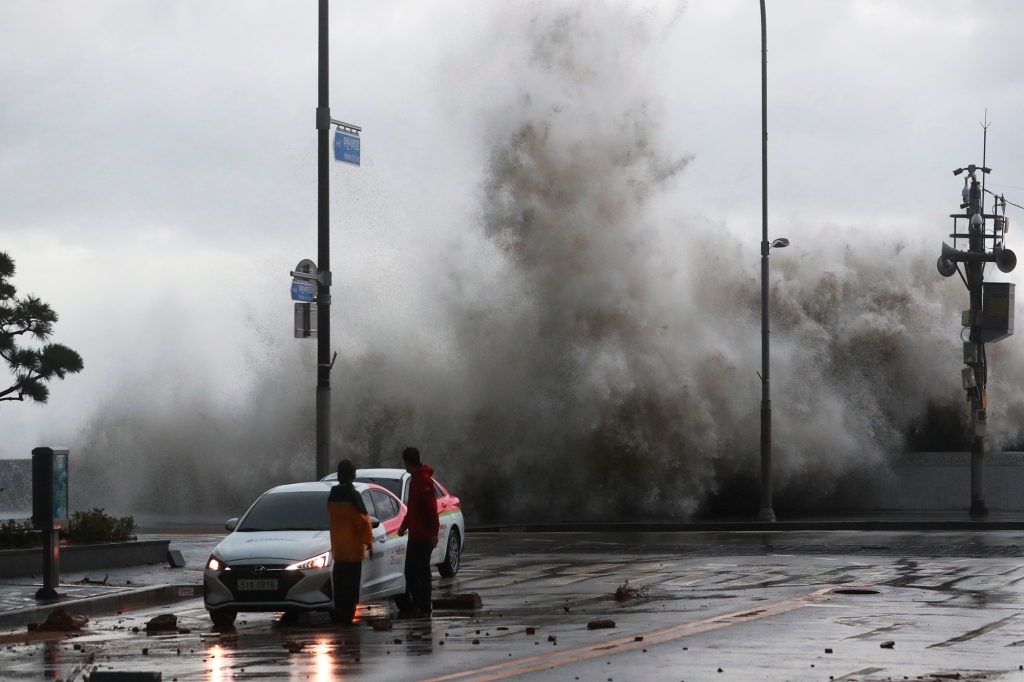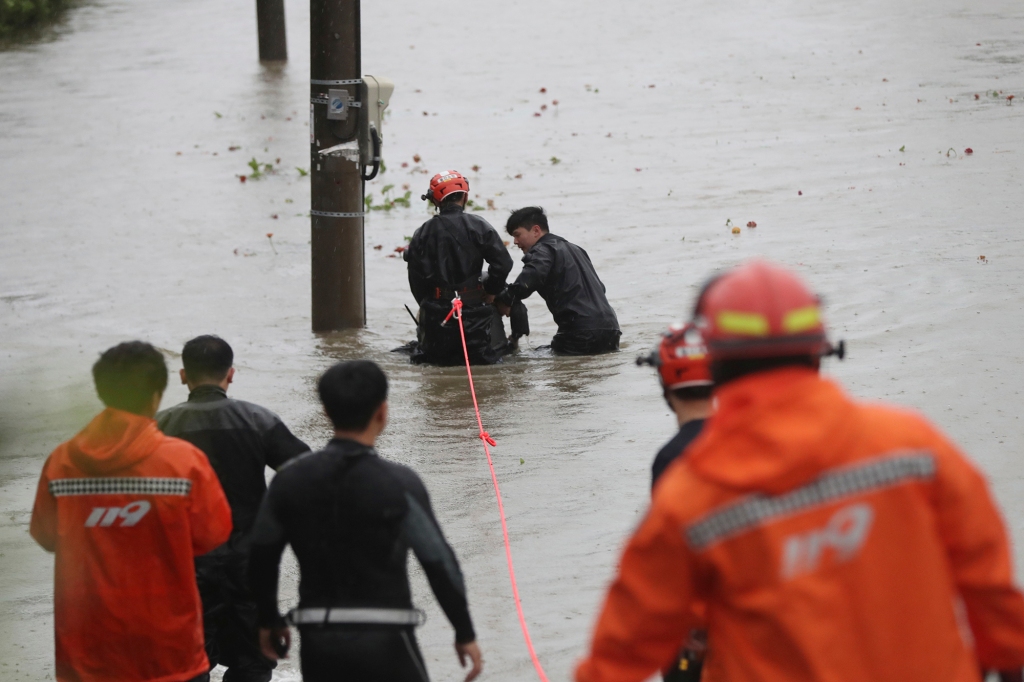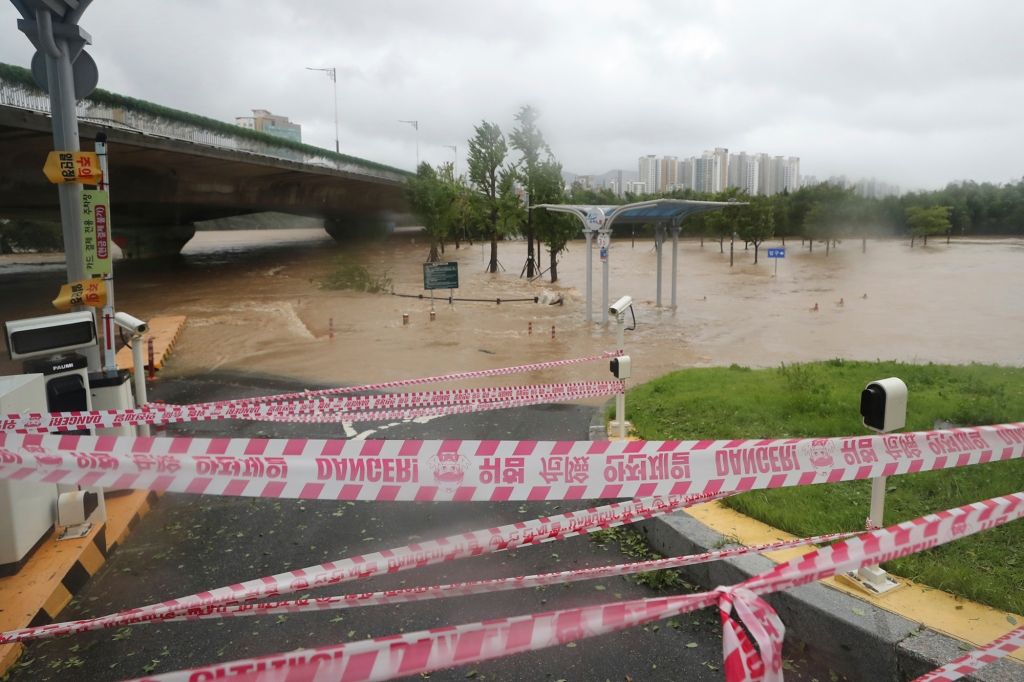More On: Typhoon Hinnamnor
South Korea is being battered by a typhoon with 3 feet of rain and devastating gusts
The most violent storm to hit South Korea in years pummeled the country's southern area Tuesday, dumping a meter (3 feet) of rain, damaging roads and downing power lines, leaving 66,000 houses without power and thousands fleeing to safer ground.
Typhoon Hinnamnor brushed up against the resort island of Jeju before slamming into the sea between the Korean Peninsula and Japan with gusts of up to 133 kilometers (82 miles) per hour. It was traveling northeast and was expected to hit eastern China later this week.
South Korean officials have issued a warning about the risk for flooding, landslides, and tidal waves caused by Hinnamnor, only weeks after torrential rains in the region around Seoul triggered flooding that killed at least 14 people.

Prime Minister Han Duk-soo ordered evacuations in flood-prone areas, warning that Hinnamnor could become a "historically strong typhoon that we have never experienced before."
Since Sunday, the storm has dumped more than 105 centimeters (41 inches) of rain in central Jeju, with winds reaching 155 kph (96 mph). Heavy rain also lashed the southern and eastern mainlands, knocking down signboards and roofing, toppling trees and power poles, and turning roadways into chocolate-colored rivers.
According to the Ministry of the Interior and Safety, a woman in her 70s died in the southern city of Pohang after being washed away by flash floods, and two other people were missing, including a 25-year-old male who fell into a rain-swollen stream in the nearby city of Ulsan.

Fires were reported at POSCO's large steel facility in Pohang, but it was unclear whether they were caused by the storm.
According to the Safety Ministry, approximately 500 of the 3,400 persons who had been forced to leave have returned home as of Tuesday afternoon. At least five homes and structures were demolished or flooded, and numerous roads were affected.
Over 600 schools have been closed or converted to online programs. More than 250 flights and 70 ferry services were cancelled, and over 66,000 fishing boats were evacuated to ports. Workers had restored power to 30,006 of the 66,341 houses that had lost power by late morning.
A South Korean presidential official, speaking on the condition of anonymity during a background briefing, said officials were looking into the cause of the fires at POSCO's Pohang plant, where firemen were battling flames that had destroyed at least three structures.

According to Lim Yoon-sook, a fire department official in North Gyeongsang province, the flames damaged a building housing power equipment and were still burning through a separate office building, but crews were near to extinguishing a minor fire at a cokes business.
State media in North Korea announced "all-out efforts" to mitigate flooding and landslides. The Korean Central News Agency stated that during cabinet meetings, leader Kim Jong Un issued vague "specific duties" to boost the country's disaster response capacity, but it did not explain.
Heavy rains and floods in North Korea in 2020 damaged buildings, highways, and crops, startling the country's already-crippled economy.












